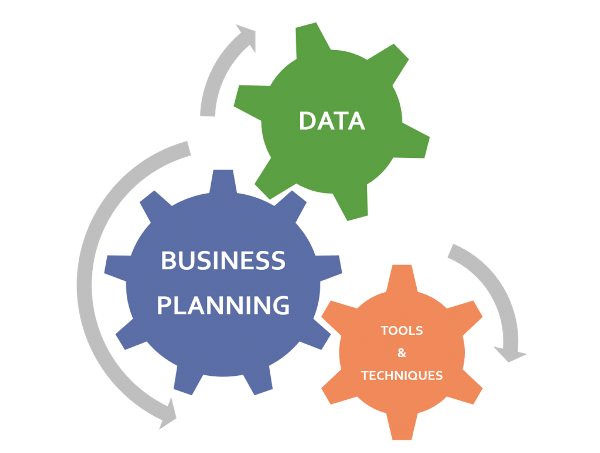 How far can you go with improving your FP&A practices? Recently, I have encountered a paper conveyed by Prophix: Defining the Evoluion of FP&A: Benchmarks, Challenges and Opportunities.
How far can you go with improving your FP&A practices? Recently, I have encountered a paper conveyed by Prophix: Defining the Evoluion of FP&A: Benchmarks, Challenges and Opportunities.
In this paper the authors are trying to find the key points that define FP&A evolution, based on a survey conducted among 300 FP&A leaders. The results of the survey are presented in the form of insights, of which they have 7.
I will try not to give too much away, but for me, the most striking insight was the following: ‘FP&A Leaders want better data, better technology, more accountability” (Insight 7).
While reading about this insight, an analogy of a mythological three-headed serpent came to my mind. I recalled my childhood and the tales I have read about such creatures. The biggest problem this serpent had, was: which of the heads was the master?

In our book ‘Make Data Work for You’ (which you can download for FREE here), we have presented the model of: ‘data – business planning – tools & techniques’, which seems to have a straightforward connection, and relevance to Prophix’s Insight 7. This model is also a similar legendary creature with three powerful heads and the same eternal dispute: which of the three is most important?
First of all, let’s have to look at each ‘head’ separately.
Data
The Prophix survey states that ‘Companies face a shortage of the right data’ (Insight 4). My first question is: what is the ‘right’ data? You get data from almost every department of your company, as well as from the outside world. The key to ‘right’ data is ensuring that the data you process and exchange fits the predefined purpose. In order for this to work, you and your colleagues and partners need to ‘speak the same language’. You need to be very meticulous formulating correctly which data you need and knowing which data you must get.
The next issue is the quality of the data. If you use ‘bad’ data for your analysis, it will directly influence the quality of your results. As they say: ‘Garbage in, garbage out’. How to get correct data that fits the purpose, at the right place, at the right time? You need to initiate the process of managing data according to the needs and feasible resources of your company. This can all be achieved with a well-implemented data management function.
Business Planning
Now assume you have right data at the right place. Is your FP&A function mature enough to process the data effectively? Accordin to the Prophix survey: ‘Companies invest time on the wrong FP&A activities’ (Insight 3), ‘FP&A teams aspire to be more strategic (Insight 2), ‘Companies are immature relative to FP&A analytics’ (Insight 1). In order to become more mature and strategic, you need to know which of your business stakeholders have which needs and information requirements. You need deliver information that fits the decision makers’ purposes. And the delivery of this information needs to be as effective as possible. So, business partnering and optimization of your own processes, together with business planning methodologies call to action. You need to move from data processing to data and information analysis. You need to move from looking back to looking forward in your analysis. By providing correct advice to decision makes you gain the position of a strategic partner.
Tools & Techniques
The efficiency and effectiveness of business planning processes and advanced techniques often require the support of modern technology. Quoting the Prophix survey again: ‘FP&A success is inhibited by technological immaturity’ (Insight 5). Here is the time to assess which technology meet your real business requirements and fit your company capabilities. From my experience, very often after implementation of software applications, only 20 % of the functionalities are used. Why? Perhaps due to limited knowledge, absence of trained staff, and thus not knowing, or not having the means to use the software to its full potential. Manual work-arounds are built as substitution for these limitations. The real key to solving this issues is matching your technological ambitions with your real needs and capabilities.
Now let’s get back to our FP&A serpent. I believe its three heads are three masters that cannot be separated from each other. Each head plays own important role in FP&A development. They do need to be working together to a set purpose, and correspond to the company’s resources and ambitions. Only then they can conquer the world.
The next, and more important question is: in which order should you start improving the 3 key elements in order to work on your own FP&A (r)evolution?
Subscribe to
FP&A Trends Digest

We will regularly update you on the latest trends and developments in FP&A. Take the opportunity to have articles written by finance thought leaders delivered directly to your inbox; watch compelling webinars; connect with like-minded professionals; and become a part of our global community.
